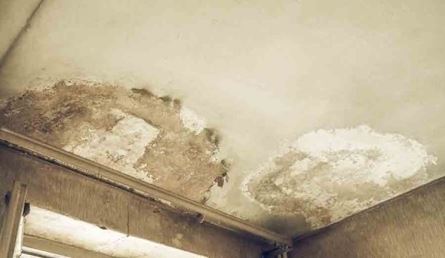
Are you planning on buying a new home in the near future? As all current homeowners know, this is a major decision, and one of the biggest commitments you will make in your entire life. For most people, their house is their chief asset, which is why it’s essential to make sure everything is in order with your new property before the close of escrow. You definitely don’t want hidden surprises—such as prior water damage coming back to bite you when you least expect it. Keep reading to learn how to spot water damage when house shopping, courtesy of our professional water damage restoration team at FP Property Restoration.
5 Ways to Locate Water Damage When Buying a House
- Watch Out for Nasty Smells: Water damage has a nasty, musty smell that can linger even long after an original incident has occurred. What you are really detecting in these cases is the presence of mold growth—one of the worst ongoing problems your property can experience. It is on the current owner to pay for odor removal if there are any smells related to water damage, and to have the house tested for mold. Trust your nose when looking at a potential home, and look for spots of discoloration as well. You may also want to hire a professional to conduct an investigation, if you detect a mold smell but can’t find the source on your own.
- Look at the Property After a Storm: For potential home-buyers who are on the verge of signing on the dotted line, one of the smartest things to do is to check out the property after a storm has occurred. This will allow you to see if the house is vulnerable to storm damage, and is a good opportunity to check out the foundation, crawlspaces, gutters, and any other spots where rainwater is likely to cause a problem. Speaking of which…
- Go Up on the Roof: Shingles that are loose, damaged, or discolored are a telltale sign of a home that is vulnerable to water damage. You should also ask about attic insulation, especially if you live in a part of the country where the weather gets extremely cold during the winter, and can cause ice dams to form on the roof. Of course, climbing on the roof yourself can be dangerous, so again, if you are not comfortable doing this on your own, consider hiring a professional to go up there for you.
- Inspect Doorframes & Windows: One of the best ways to see if a house is vulnerable to water damage without even entering it is to look at the windows and doorframes. If you see gaps between walls and sills, peeling caulk, or wood that is discolored and soft, there is a good chance the house has experienced water damage in the past, and may experience it again in the future. Wood rot is one of the biggest problems for homeowners, and can even attract termites, so you will want to know whether this is a potential issue as soon as possible.
- Keep Your Ears Open for Leaks: We’ve already talked about using your nose and eyes to spot potential water damage, so naturally, you’ll want to use your ears as well. If you hear a dripping sound in the bathroom, check out the sink, faucet, bathtub, and showerhead for leaks. A small leak can be fixed fairly easily, but if left unchecked, even small leaks can turn into a major problem, raising your utility bill and eventually causing serious water damage. It is also a good idea to turn the water off in the house completely. If you still hear that dripping sound after you’ve done that, it is likely you’ve got a leak on your hands.
Has your home recently experienced severe water damage? Call our experts at FP Property Restoration today at (888) 408-2335, or send us a message online.

